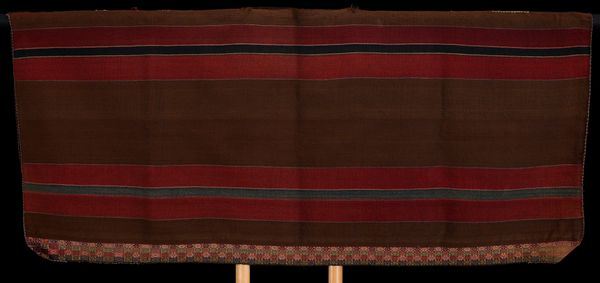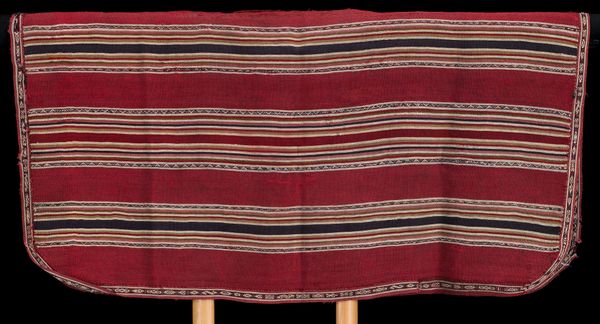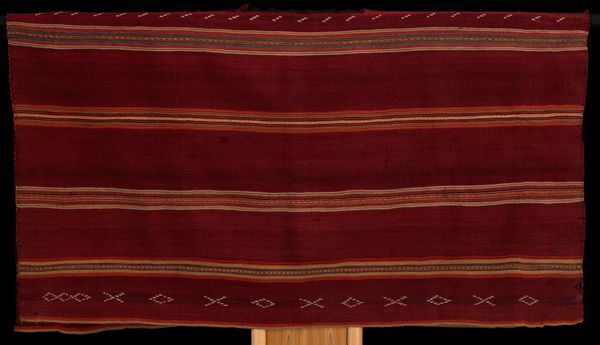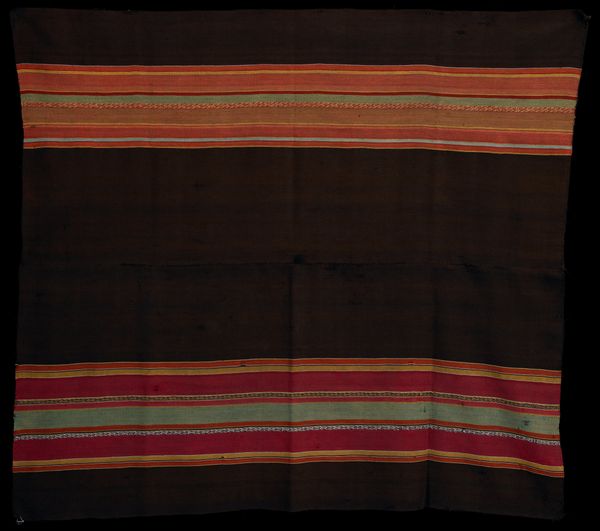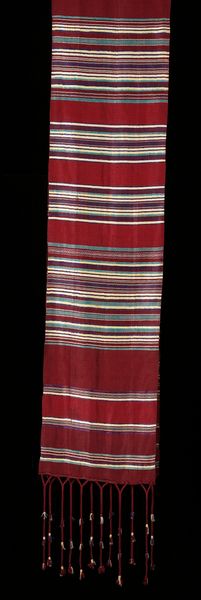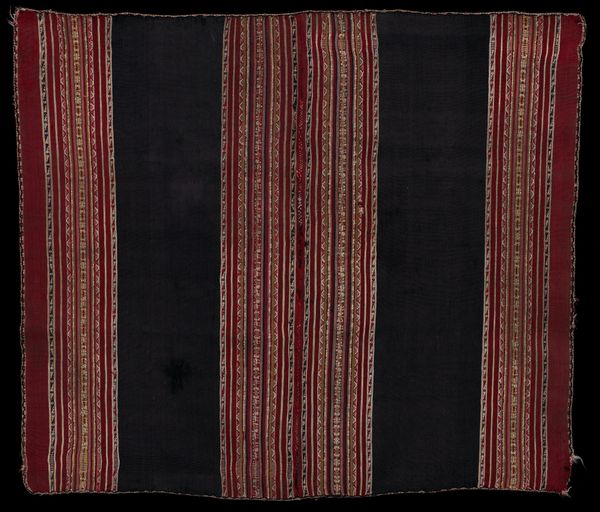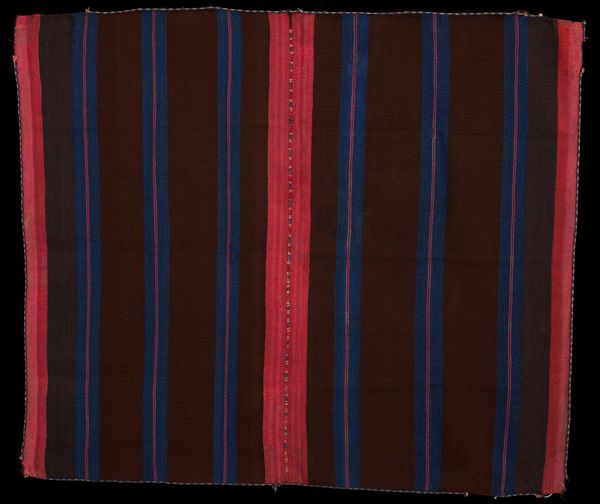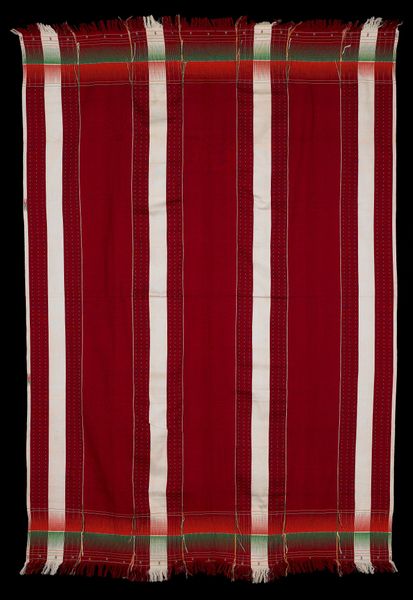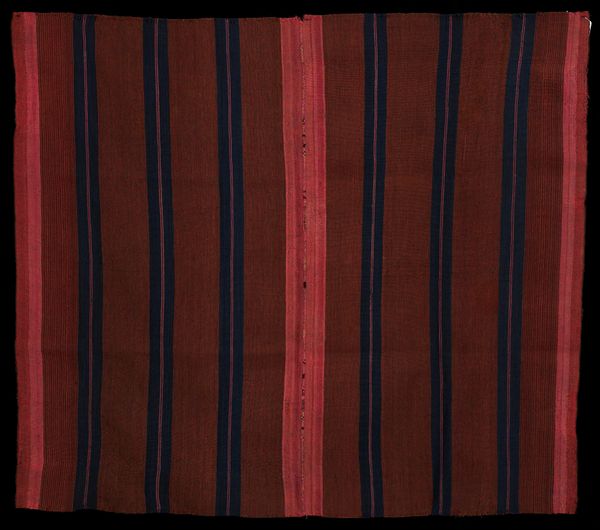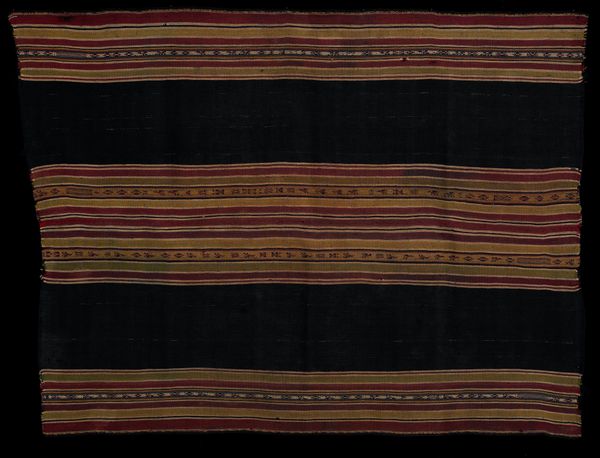
fibre-art, weaving, textile
#
fibre-art
#
weaving
#
textile
#
geometric pattern
#
geometric
#
line
#
indigenous-americas
Dimensions: 19 9/16 x 42 1/2 in. (49.69 x 107.95 cm) (folded)
Copyright: Public Domain
Curator: Here we have a Man's ceremonial kawa ponchito, crafted by the Aymara people around the 19th century. The piece utilizes fibre-art and weaving techniques, resulting in a textile rich with geometric patterns. Editor: My first thought? Elegant simplicity. The bold blocks of color, the precise lines—there's a power in its straightforwardness. Almost feels like a flag, a symbol of something. Curator: Precisely! Ponchitos like these were more than mere garments. The patterns, materials, and craftsmanship held significant social and political meaning. The colors would communicate the status and the position of the wearer in the community. Editor: Knowing that adds another layer. It’s not just aesthetic; it's a statement. Do we know what those colours represented back then? Curator: Red dyes in the highlands have historically been linked with community power. Dyes of deep dark shades communicate solemnity, a connection to heritage. The very act of weaving also was tied to womanhood and domestic space within Andean culture. The straight, contrasting lines provide abstraction and further symbolic understanding. Editor: So, by wearing it, a man was essentially embodying the values and perhaps the lineage of his family, right? It’s interesting how a seemingly simple piece of clothing becomes such a complex carrier of culture and identity. Does this ceremonial use affect how it appears in a museum setting like this? Curator: Absolutely. Exhibiting such objects brings challenges. We aim to balance its aesthetic appeal with its historical and cultural importance. The risk is always decontextualization—transforming a lived object into just a display piece. The hope is always for an informed viewship. Editor: Well, I see it now not just as a geometric pattern, but as a voice from the past—woven with intention, worn with pride, and now, hopefully, viewed with understanding. Curator: Precisely. Each thread tells a story, and it's our role to listen, learn, and share that story with respect.
Comments
No comments
Be the first to comment and join the conversation on the ultimate creative platform.
